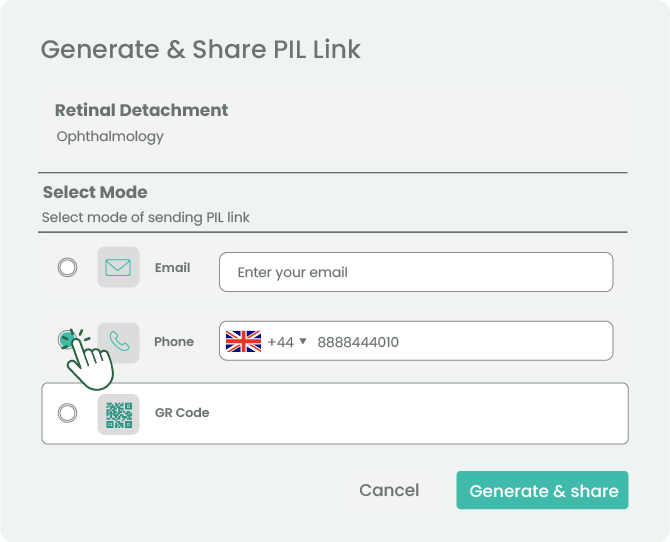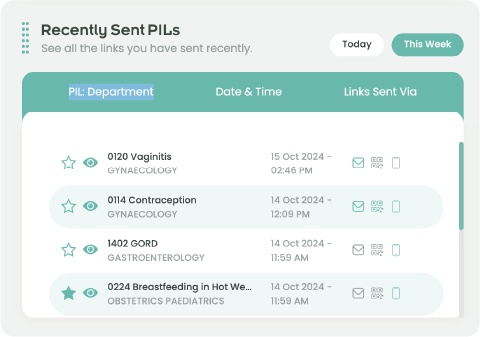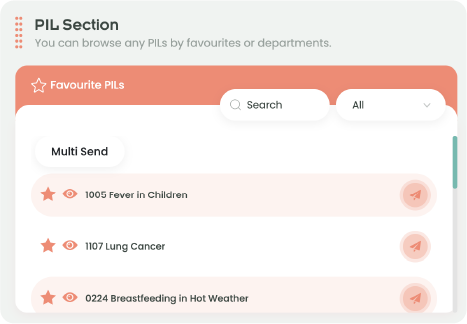Digital transformation is reshaping how hospitals and healthcare organizations communicate with patients to improve patient understanding, engagement, and compliance with treatment plans.
Below are the top trends shaping the future of digital patient education and redefining how patients learn and participate in their care.
1. Personalised Education Content
Personalisation is a cornerstone of digital patient education. It tailors learning to each patient’s:
- Medical condition and treatment plan
- Health literacy level
- Preferred language and format
- Individual goals and progress
Advanced analytics now help healthcare providers deliver relevant, customized materials that resonate with each patient.
Using medical coding to personalise the material sent to patients automates the process and improves efficiency.
Personalisation enhances engagement and health outcomes by ensuring patients clearly understand their conditions, medications, and treatment pathways.
2. Mobile-Optimised Learning

With smartphone use expanding, mobile learning has become essential.
Patients can now access digital patient education platforms through:
- Mobile apps and text messages
- QR-linked educational pages
- Responsive, mobile-friendly websites
Mobile access empowers patients to learn anytime, enhancing understanding, recall, and adherence to treatment.
3. Video and Interactive Content

Videos, quizzes, and animations are making patient education materials more engaging than ever.
They transform passive reading into interactive, visual learning experiences.
Key advantages include:
- Simplifying complex medical information
- Boosting retention through visuals and repetition
- Encouraging patient participation and feedback
Interactive formats help patients feel more confident and involved in managing their health.
4. EMR-integrated patient education
Integrating patient education within electronic medical records (EMR) ensures learning materials are shared at the right time.
It allows clinicians to:
- Provide accurate education during appointments
- Monitor engagement directly within the workflow
- Align learning with current treatments
EMR integrated education bridges the gap between clinical guidance and patient understanding, improving communication and continuity of care.
5. Focus on Health Literacy and Accessibility

Digital patient education is becoming more inclusive, emphasising:
- Simple, clear language
- Visual aids and icons
- Multilingual options
- Culturally sensitive design
The aim is to ensure that all patients, regardless of background, can access and benefit from educational materials.
6. On-Demand Learning and Micro-learning
On-demand learning and microlearning, which is delivering information in small, digestible pieces, are rising in popularity.
Patients can access short modules whenever they need to refresh their knowledge or learn more about their condition.
This approach keeps learning manageable and minimises information overload, which is critical for retaining key details about treatments and self-care.
7. Data-Driven Insights for Content Improvement
Healthcare organisations are using analytics to refine education materials.
By tracking engagement, providers can identify what resonates most with patients.
Examples of insights include:
- Most-viewed topics
- Drop-off points in videos or modules
- Commonly misunderstood concepts
These findings help improve clarity, relevance, and impact over time.
8. Collaborations with Patients to Produce Educational Material
Collaborating with patients plays a vital role in creating effective digital patient education materials.
By this approach, healthcare organisations can ensure that educational resources are accurate, relevant, and meaningful.
This collaboration includes:
By this approach, healthcare organisations can ensure that educational resources are accurate, relevant, and meaningful.
This collaboration includes:
- Identifying key health topics that address real concerns and information gaps.
- Reviewing and refining content to ensure clarity, simplicity, and cultural relevance.
- Preparing materials for distribution in accessible, multilingual formats suited to diverse audiences.
The evolution of digital patient education is reshaping how patients learn, engage, and manage their health. Healthcare organizations that embrace these trends can boost patient understanding, satisfaction, and long-term health outcomes.






